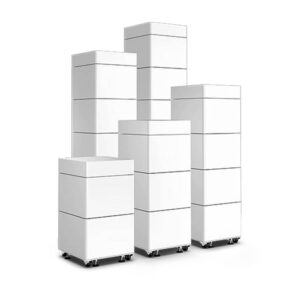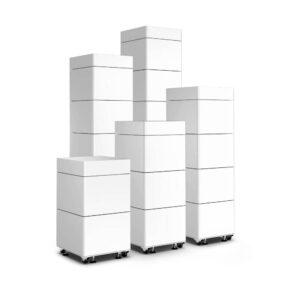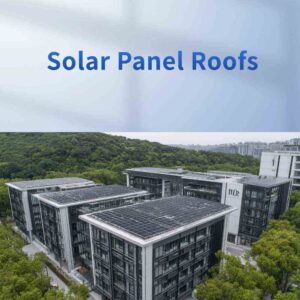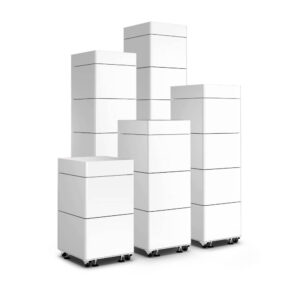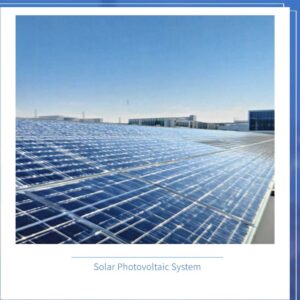Trying to pick the right solar setup for your home in 2025? Here’s the quick answer: grid-tied systems give you the best savings and payback, a hybrid solar system offers backup and flexibility, and off-grid setups give you total independence. If you want low bills and live in a city, grid-tied fits best. Off-grid works great for remote cabins. Hybrid suits you if you need backup power. Check out the main features below:
| Type | Best For | Main Benefit |
|---|---|---|
| Grid-Tied | City/Suburb Homes | Lowest cost, ROI |
| Hybrid | Backup Seekers | Flexibility, backup |
| Off-Grid | Remote Properties | Full independence |
Solar adoption keeps rising. Off-grid systems now grow faster than grid-tied ones, and hybrid options keep gaining ground. Think about your budget, your location, and how much you value backup power as you decide.
Principais conclusões
- Grid-tied systems work best for city homes. They cost the least and are easy to set up. These systems help you save money on your electric bills.
- Hybrid systems give backup power and more choices. They are good for places with many power outages. You can use both solar and grid energy with them.
- Off-grid systems let you be fully independent from the utility grid. They are great for faraway places. These systems need careful planning and cost more at first.
- Think about where you live, your budget, and how much energy you need. Each system type has special benefits for different people.
- All systems need regular care, but grid-tied ones are the easiest to handle. Off-grid systems need more work to keep running well.
Grid-Tied Systems
What Are Grid-Tied Systems?
You connect a grid-tied solar system directly to your local utility grid. This setup lets you use solar power when the sun shines and switch to grid electricity when you need more. You do not need batteries. Your home uses solar energy first, then pulls from the grid if needed. If your panels make extra power, you can send it back to the grid. Many people call this net metering. You get credits for the energy you share.
Here’s a quick look at the main parts you’ll find in a grid-tied system in 2025:
| Component Type | Descrição |
|---|---|
| Solar Panels | Most homes use panels rated 400-500 watts. 450W panels are now the standard. |
| Grid-Tie Inverters | You can choose String Inverters, Microinverters, or Power Optimizers. Each has its own perks. |
| Monitoring Systems | You track your system’s output, performance, and savings with apps and online tools. |
| Electrical Components | Includes AC Disconnect Switch, Production Meter, Net Meter, and grounding gear. |
| Mounting Systems | Roof, ground, or pole mounts are available. Roof mounts work best for city homes. |
Prós
- You save money on your electric bill.
- You get the best return on investment.
- You do not need to buy or maintain batteries.
- You can earn credits by sending extra power to the grid.
- You help the environment by using clean energy.
Tip: Grid-tied systems are easy to install and maintain. You can monitor your system from your phone.
Contras
Grid-tied solar systems depend on the utility grid. If there is a power outage, your solar panels stop working, even if the sun is shining. This safety rule protects workers fixing the lines. Net metering rules can change, and some states may offer fewer credits over time.
Best For
If you live in a city or suburb, a grid-tied system fits your needs. You likely have limited space, so roof-mounted panels work well. You stay connected to the grid, which means you always have backup power. This option suits homeowners who want to save money and keep things simple.
Off-Grid Systems
What Are Off-Grid Systems?
Some people want to live far away from cities. They use only the sun for power. Off-grid solar systems help you do this. You do not connect to the utility grid. Your home uses solar energy. Batteries store power for night or cloudy days. Here is what you need for off-grid in 2025:
- Solar panels: These catch sunlight and make electricity.
- Battery storage: You save extra power for later use. Lithium-ion and LiFePO4 batteries last longer. Lead-acid batteries cost less.
- Inverters: These change DC electricity to AC. Your appliances need AC to work.
- Charge controllers: These keep batteries safe from damage.
You control your own power. You choose how much energy you use and when.
Prós
Off-grid solar systems have many good points. Here is what people like:
| Advantage | Descrição |
|---|---|
| Independence from the grid | You do not need city power. You stay self-sufficient and reliable. |
| Cost savings | You pay more at first, but save money later. You spend less on bills and repairs. |
| Ease of installation | You can put these systems almost anywhere. They work in remote places. |
| Environmental benefits | You use clean energy. You help lower pollution. |
| No power outages | You do not lose power like grid homes do. |
Tip: Off-grid systems are best if you want full control and freedom from utility companies.
Contras
Off-grid living has some hard parts. Here is what you should know:
- Maintenance changes with the weather. You may clean panels, stop rust, clear snow, or check for water.
- You need backup power, like a generator, for cloudy days or long winters.
- You must learn about batteries, electricity, and system checks.
- You have to follow building rules, get permits, and handle insurance.
- Planning your system takes work. You must think about peak energy use, seasons, and future needs.
Best For
Off-grid solar works well for cabins, farms, or homes in faraway places. Places like Ladakh in India or Western North Carolina in the U.S. are great. They get lots of sun and have open land. If you want freedom, love nature, or need power where the grid cannot reach, off-grid is the best choice.
Hybrid Solar System
What Is a Hybrid Solar System?
A hybrid solar system lets you use solar power and batteries. You also stay connected to the grid. During the day, your home uses solar energy. If you make extra power, your batteries charge first. Any leftover power goes to the grid. At night or on cloudy days, you use battery power or get electricity from the grid.
Here’s why hybrid solar systems are special in 2025:
- You can use solar, batteries, or grid power for your home.
- Smart hybrid inverters help manage your energy.
- The system switches by itself if the power goes out.
- You get features like saving money by using power at the best times and checking your system from far away.
You do not need to worry about blackouts. The system changes over in just a few seconds.
Prós
Hybrid solar systems have many good points. Here is how they compare:
| Recurso | Hybrid Solar Systems | Grid-Tied Systems | Off-Grid Systems |
|---|---|---|---|
| Battery Backup | Yes, gives you power when the grid is down | No | Yes, but needs bigger batteries |
| Grid Support | Yes, you can use the grid and send extra power | Yes, only uses the grid | No |
| Versatility | Uses both grid and batteries | Only uses the grid | Works alone but is less flexible |
| Custo | Costs more at first because of batteries and inverters | Costs less at first | Costs a lot for batteries and inverters |
| Automatic Transfer | Yes, switches by itself during outages | Not needed | You must switch it yourself |
You get backup power, flexibility, and can save money on your bill.
Contras
Hybrid solar systems have some problems too. Here are the main ones:
- It costs a lot to install because of batteries and smart inverters.
- Batteries might not last long if the weather is bad.
- The system can be hard to use and fix.
- You need space to keep the batteries.
- Some energy is lost when you store and use battery power.
- Local rules might stop you from selling lots of power back to the grid.
If you want something easy, a hybrid solar system may seem hard to use.
Best For
Hybrid solar systems work for many places. Here are the people who get the most from them:
| Type of Candidate | Descrição |
|---|---|
| Homeowners | Good for people who want lower bills and power during outages. |
| Businesses and Industries | Great for steady power and saving money. |
| Agricultural Operations | Helps farms with power for watering, lights, and machines. |
If you want backup power, flexibility, and more control, a hybrid solar system could be right for you.
Cost Comparison
Upfront Costs
When you look at solar systems, the first thing you notice is the price tag. Grid-tied systems usually cost the least. Hybrid systems sit in the middle. Off-grid setups cost the most because you need more equipment.
Here’s what you can expect to pay in 2025:
- Grid-tied systems: You pay between $8,000 and $26,000 before incentives. If you use the federal Residential Clean Energy Credit, you can save 30%. For example:
- A 3 kW system costs about $5,600–$7,000 after the credit.
- A 6 kW system costs around $10,500–$12,600.
- A 10 kW system costs about $15,400–$18,200.
- Hybrid systems: You pay more than grid-tied because you add batteries and smart inverters. Most people spend between $15,000 and $35,000, depending on battery size.
- Off-grid systems: These cost the most. You pay anywhere from $25,000 to $67,000. You need bigger batteries, backup generators, and extra wiring.
Let’s see how installation costs compare:
| Tipo de sistema | Key Features | Cost Considerations |
|---|---|---|
| Grid-Tied | Simple setup, uses existing grid | Lower installation costs |
| Hybrid | Uses grid and batteries, smart controls | Higher costs for batteries and extra components |
| Off-Grid | Works alone, needs big battery bank and generator | Highest upfront costs due to more equipment |
If you want the lowest upfront cost, grid-tied is your best bet. Off-grid is for people who want total freedom and don’t mind paying more.
Maintenance & Savings
Solar systems don’t just cost money up front. You also need to think about keeping them running and how much you’ll save over time.
- Grid-tied systems: You spend less on maintenance. You don’t have batteries to check or replace. Most of your savings come from lower electric bills and net metering credits. You might only need to clean panels and check your inverter once a year.
- Hybrid systems: You save money on bills and get backup power. You need to check your batteries and inverter every few months. Batteries last longer if you use lithium-ion or LiFePO4 types. You might need to replace batteries every 10–15 years.
- Off-grid systems: You do all the work yourself. You check batteries, clean panels, and sometimes fix generators. Battery banks are bigger, so you spend more on replacements. You save on electric bills, but you pay more for upkeep.
Here’s a quick list of what you’ll do for each system:
- Clean solar panels
- Check wiring and connections
- Monitor system performance
- Replace batteries (hybrid and off-grid)
- Service backup generators (off-grid)
Off-grid systems need the most attention. Grid-tied setups are the easiest to maintain.
Battery Storage
Batteries make a big difference in cost and how your system works. Grid-tied systems don’t need batteries. Hybrid and off-grid systems do.
- In 2025, battery prices range from $200 to $400 per kWh. In the US, you pay about $236 per kWh. In China, prices are lower, around $101 per kWh.
- Most battery storage costs between $550 and $900 per kWh, not counting installation.
- A 6 kWh battery costs about $4,000. You also pay for inverters and installation.
You need to replace batteries every 5–15 years. Lithium-ion and LiFePO4 batteries last longer and need less care than lead-acid batteries. Hybrid systems use smaller batteries because you have grid backup. Off-grid systems need bigger battery banks, so you pay more for replacements and maintenance.
Here’s what you should remember:
- Batteries in hybrid and off-grid systems need regular checks.
- LiFePO4 batteries last 10–15 years, which helps you save money in the long run.
- Off-grid systems cost more because you need more batteries and sometimes a generator.
If you want to avoid battery costs, stick with grid-tied. If you want backup power or full independence, plan for battery expenses.
Reliability
Power Outages
You want your lights to stay on if the grid fails. Solar systems act differently during outages. Grid-tied systems turn off in blackouts. This keeps utility workers safe. You lose power unless you have a backup battery. Hybrid systems help more. They use batteries to keep your home powered when the grid stops. Off-grid systems always work. They use their own battery banks, so outages do not bother you.
Here’s how each system works when the power goes out:
| Tipo de sistema | Performance During Outages |
|---|---|
| Grid-Tied | Stops working in outages unless you add a backup battery. |
| Hybrid | Uses batteries to keep things running during outages. |
| Off-Grid | Stays on during outages because it uses its own battery storage. |
If blackouts happen a lot where you live, think about hybrid or off-grid systems. These choices keep your important things working, even if the grid is down.
Grid Connection
How your solar system connects to the grid changes how reliable your power is. Grid-tied systems need the utility grid. If the grid fails, your solar panels stop working. You cannot use the electricity from your panels unless you have batteries. Hybrid systems fix this. They switch to battery power when the grid fails. You get backup power for your house.
- Grid-tied solar systems shut down in blackouts to keep people safe.
- They make electricity during the day, but you cannot use it without batteries.
- Hybrid systems give backup power with battery storage.
- Hybrid systems work best in places where the grid is not always reliable.
If you live in a city with strong power, grid-tied systems are good. If your area has weak power, hybrid systems help you worry less. Off-grid systems are best for places with no grid at all. You control your power, no matter what happens outside.
Think about how often you lose power. Do you need backup for storms or outages? Your answer will help you choose the best solar system for your home.
Suitability
Property Types
Where you live and your property type matter a lot. City and suburb homes have easy grid access. Grid-tied systems work best for these places. You use solar power first, then switch to the grid if needed. This saves you money and gives you credits for extra energy. Rural or remote homes are different. Off-grid solar systems work well where there is no grid. These use solar panels, batteries, and inverters for power all the time. You do not depend on the grid, so you stay independent. Off-grid systems cost more to set up, but they fit farms, cabins, or homes far from cities. Hybrid solar systems are good for places that need backup power. If your area has many blackouts, batteries give you more control. Hybrid systems also help if local programs reward battery use.
| Property Type | Best Solar System | Why It Works Best |
|---|---|---|
| Urban/Suburban | Grid-Tied | Grid access, lower costs, net metering |
| Rural/Remote | Off-Grid | No grid needed, full independence |
| Anywhere w/ outages | Hybrid | Backup power, energy control |
Tip: Grid-tied systems cost less at first. Off-grid systems give you freedom.
Lifestyle Needs
How you live helps you pick a solar system. Vacation homes or cabins may not get used often. Off-grid systems are great for these places, especially if they are far from power lines. You get independence and do not worry about the grid. For homes you use every day, grid-tied systems help lower bills. They work best if your grid is strong and you want easy savings. If you want backup during emergencies, hybrid solar systems help. You keep your lights on during outages and use energy better.
| Solar System Type | Ideal Application | Advantages |
|---|---|---|
| Grid-Tied | City homes, daily living | Lower bills, easy setup |
| Off-Grid | Cabins, vacation homes, remote | Full independence, works anywhere |
| Hybrid | Emergency backup, frequent outages | Backup power, less grid reliance |
Solar power lets you relax at your cabin or keep your home running during storms. There is a system for every lifestyle.
Comparison Table
Choosing the right solar system can feel tricky, but a quick look at the main features, pros, and cons can help you decide. Here’s a handy table to compare grid-tied, hybrid, and off-grid solar systems side by side:
| Solar System Type | Key Features | Prós | Contras |
|---|---|---|---|
| Grid-Tied | Simple setup, connects to the utility grid | Lower upfront cost, easy to install | No backup power during outages |
| Hybrid | Uses grid and batteries, smart energy control | Backup power, more energy independence | Higher upfront cost, complex install |
| Off-Grid | Works alone, needs battery storage | Full independence, great for remote areas | High cost, needs careful planning |
Let’s break it down even more:
- Grid-Tied Systems: You get a simple system that plugs right into your local power grid. You save money up front and installation is quick. But if the power goes out, your lights go out too.
- Hybrid Systems: You get the best of both worlds. Your system uses the grid and batteries. You keep the lights on during blackouts and use more of your own solar power. You pay more at first and the setup takes more work.
- Off-Grid Systems: You live free from the grid. This system works anywhere, even in the middle of nowhere. You control your own power, but you pay the most and need to plan carefully.
📝 Tip: Think about what matters most to you—cost, backup power, or total independence. This table can help you match your needs to the right solar system.
With this quick guide, you can see the main differences at a glance. Use it to help you make a smart choice for your home or property in 2025.
Choosing the right solar system depends on your needs. If you want the lowest cost and easy setup, grid-tied works best. Off-grid gives you full independence but costs more. A hybrid solar system offers backup and flexibility. Think about these factors:
- Where you live—city or remote area
- Your budget and savings goals
- How much energy you use and if you need backup
- Your commitment to sustainability
Check your roof, review your energy use, and talk to a solar installer. The right choice helps you save money and enjoy reliable, clean power.
PERGUNTAS FREQUENTES
What happens if my solar panels make more power than I use?
Your extra power goes back to the grid. You earn credits on your bill through net metering. This helps you save money each month.
Can I add batteries to my grid-tied system later?
Yes, you can add batteries later. Many people start with grid-tied and upgrade to hybrid when they want backup power. Just check with your installer first.
How long do solar batteries last?
Most solar batteries last 10 to 15 years. Lithium-ion and LiFePO4 batteries last longer than lead-acid ones. You should check your battery health every year.
Will my solar system work during a blackout?
Grid-tied systems shut off in blackouts.
Hybrid and off-grid systems keep your lights on with battery power.
If you want backup, choose hybrid or off-grid.

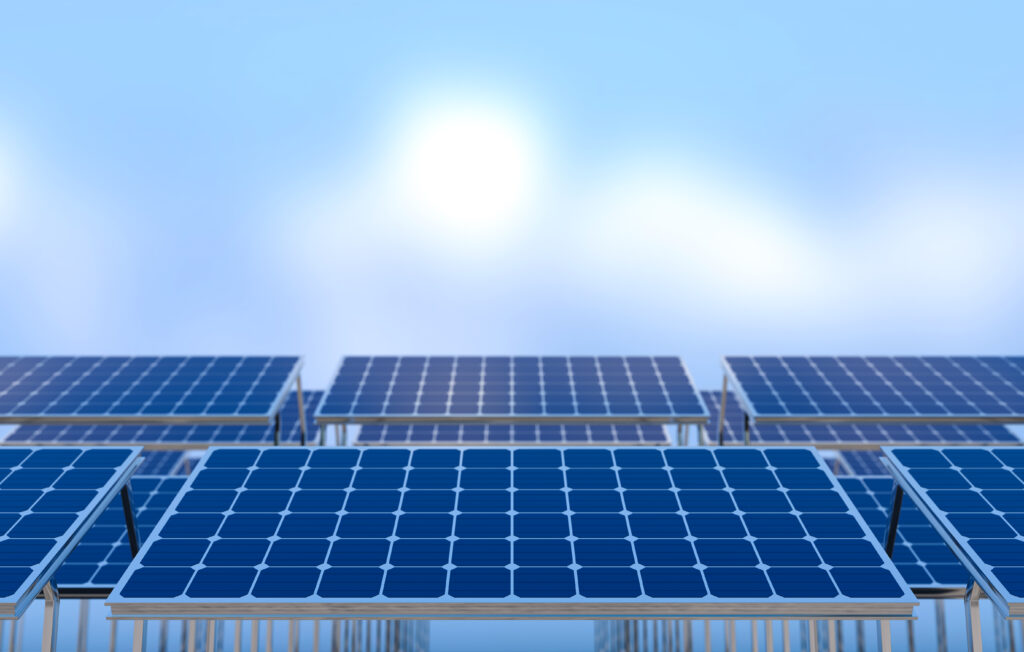
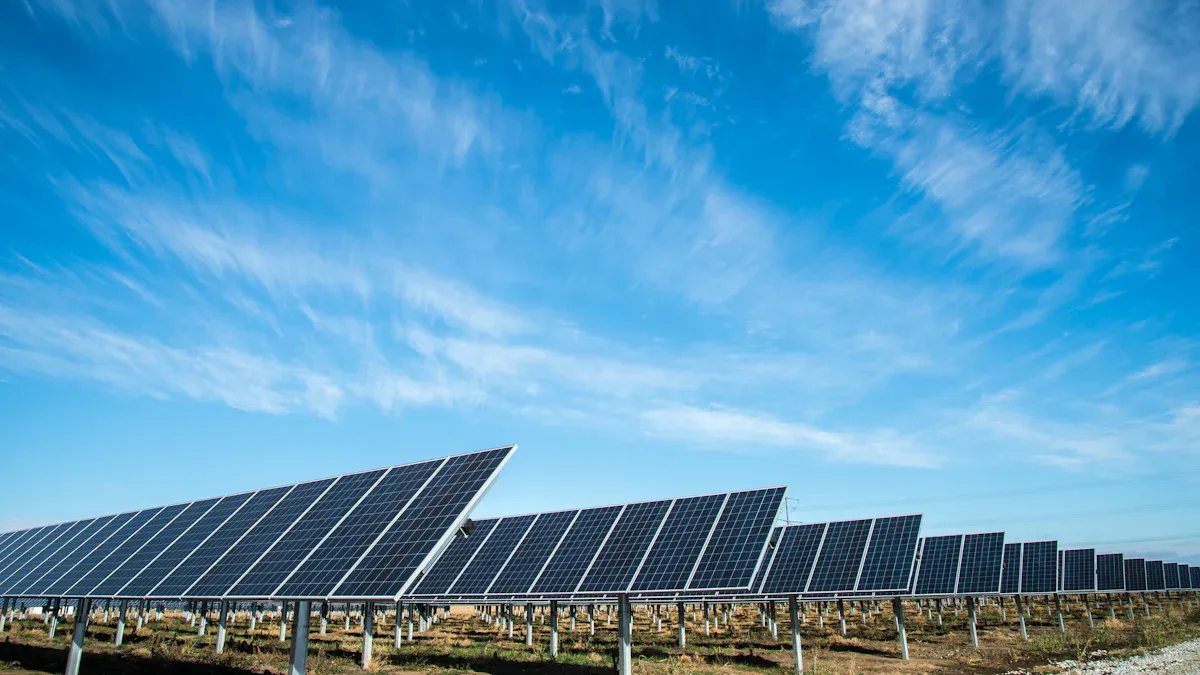
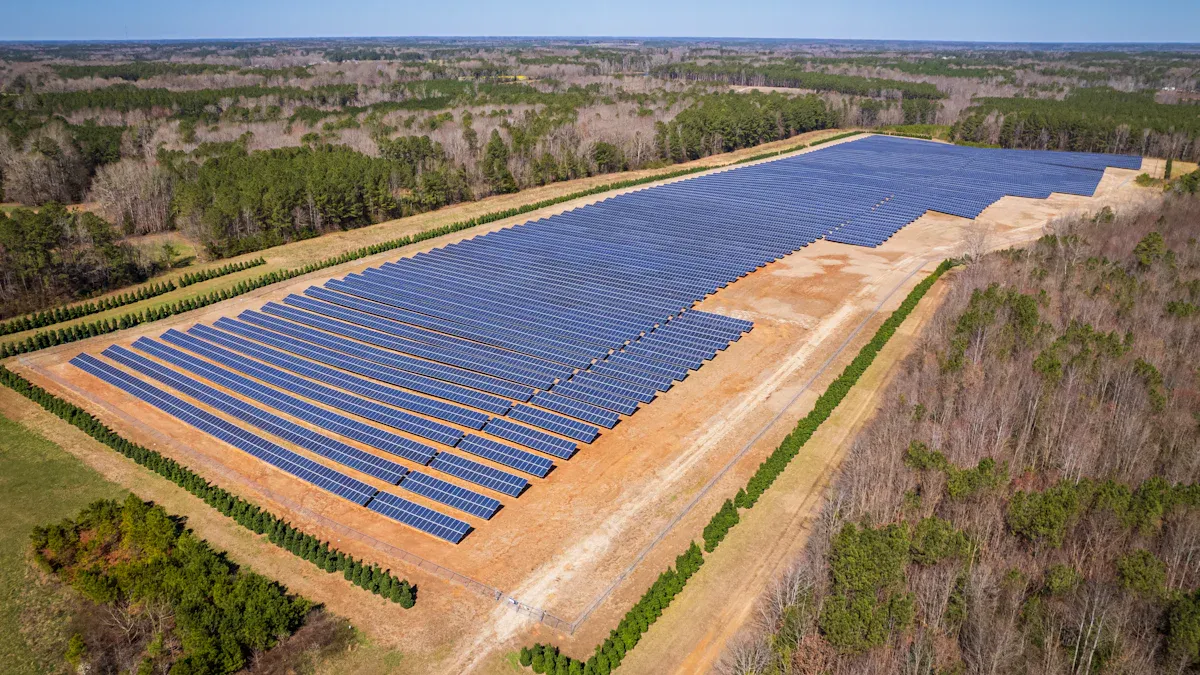
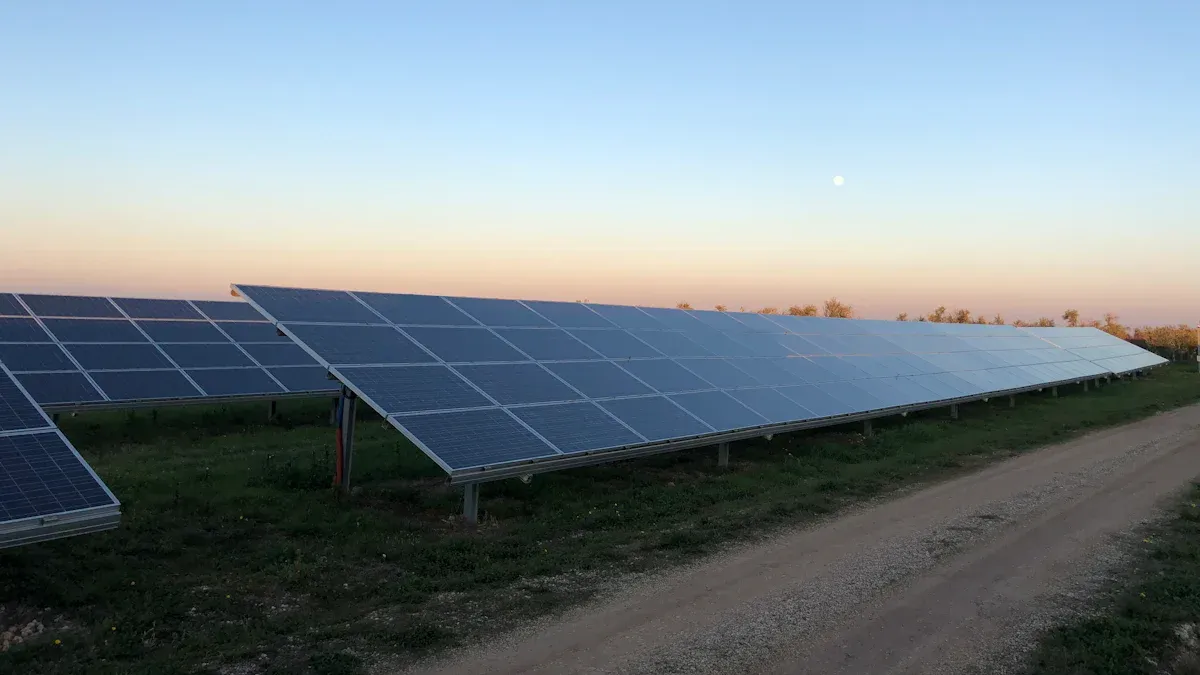



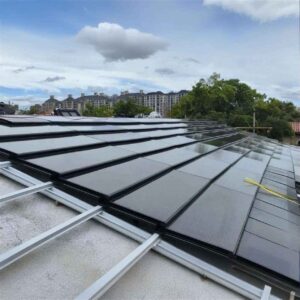
-300x300.jpg)
-300x300.jpg)
